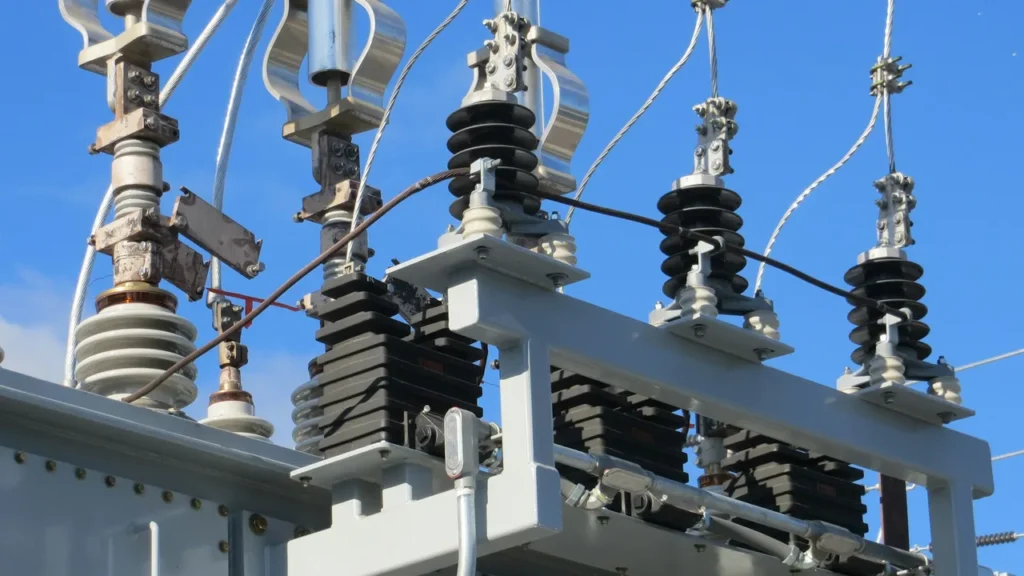As the world accelerates toward renewable generation, energy storage systems have become the foundation for building a reliable, flexible, and efficient power grid. They bridge the gap between fluctuating supply from solar and wind sources and constant consumer demand. Without effective storage, renewable energy loses much of its potential, since excess power produced during low-demand hours would otherwise go to waste.
Understanding Energy Storage Systems
At their core, energy storage systems capture electricity or heat and release it when needed. This capability stabilizes the grid, prevents blackouts, and allows utilities to integrate a higher percentage of renewable energy. Modern storage encompasses a wide range of technologies, from mechanical and chemical to thermal and hybrid solutions, each with unique benefits and challenges.
Importance in Modern Power Grids
Power grids were traditionally designed for one-way energy flow—from centralized generation to consumers. The rise of distributed renewables has flipped that model, demanding bidirectional control and sophisticated balancing tools. Here, energy storage systems act as buffers, absorbing surplus electricity and discharging it when generation drops. They also provide frequency regulation, voltage control, and emergency backup—making them indispensable in a modern smart-grid ecosystem.
Lithium-Ion in Energy Storage Systems
The most prevalent technology in today’s market is the lithium-ion battery. Originally developed for portable electronics, it now dominates electric-vehicle and grid-scale storage applications. Lithium-ion cells store electrical energy through the movement of lithium ions between an anode and cathode during charge and discharge cycles. Their appeal lies in high energy density, rapid response time, and proven scalability.
Utility-scale lithium-ion installations can react within milliseconds to stabilize frequency or absorb renewable surges. They are compact, modular, and increasingly affordable as global production expands. This efficiency makes them a cornerstone of current energy storage systems worldwide.
Limitations of Lithium-Ion Technology
Despite their advantages, lithium-ion batteries are not without flaws. Raw materials such as lithium and cobalt are limited and geographically concentrated, creating supply-chain vulnerabilities. Manufacturing also requires significant energy and water, while improper disposal can lead to environmental contamination.
Thermal instability remains another concern; cells may overheat or catch fire under certain conditions, necessitating advanced safety protocols. Moreover, their lifespan typically ranges between 8 to 12 years—shorter than infrastructure projects expected to operate for decades. These challenges drive ongoing research into alternative energy storage systems that can complement or even replace lithium-ion technology.
Thermal Energy Storage
One promising alternative is thermal storage, which stores excess energy as heat rather than electricity. This method is particularly effective when paired with solar thermal power plants or industrial processes requiring steady heat supply. Energy is stored in materials such as molten salts, ceramics, or phase-change compounds that can retain heat for long durations with minimal loss.
When electricity is needed, the stored heat is converted back into power through steam turbines or heat engines. Thermal storage offers several advantages over electrochemical batteries—it is cost-efficient, scalable, and capable of delivering energy for many hours or even days. Its durability and simplicity make it a strong candidate for large-scale renewable integration, particularly in regions with abundant sunlight.
Applications of Thermal Storage
- Solar Thermal Plants: Store daylight heat to continue generating electricity after sunset.
- District Heating Systems: Provide consistent warmth for residential and commercial buildings.
- Industrial Heat Recovery: Capture waste heat from manufacturing for reuse, cutting fuel consumption.
According to ongoing research from global energy agencies, expanding energy storage systems that incorporate thermal solutions could dramatically increase renewable reliability while reducing peak-time stress on power networks.
Mechanical Energy Storage
Mechanical methods represent some of the oldest and most mature energy storage systems. They rely on physical principles—potential, kinetic, or compressed energy—to store and release power on demand.
Pumped-Hydro Storage
The world’s largest share of stored electricity comes from pumped-hydro facilities. These systems pump water uphill to a higher reservoir during off-peak hours and release it through turbines to generate power when demand spikes. With round-trip efficiencies of 70–85 percent and operational lifespans exceeding 50 years, pumped hydro remains the gold standard of bulk storage.
Compressed-Air Energy Storage (CAES)
Another mechanical technique uses compressed air stored in underground caverns or steel tanks. When power is needed, the compressed air is heated and expanded through turbines to produce electricity. CAES plants can deliver gigawatt-scale output with minimal degradation over time. They provide long-duration storage suited for balancing seasonal renewable variability.
Chemical and Emerging Systems
Beyond lithium and mechanical options, several cutting-edge technologies are redefining what energy storage systems can achieve:
- Hydrogen Storage: Converts surplus electricity into hydrogen via electrolysis, which can later fuel turbines or fuel cells for zero-emission power generation.
- Flow Batteries: Use liquid electrolytes—often vanadium or zinc-based—to separate power and energy capacity, ideal for large installations requiring tens of thousands of cycles.
- Supercapacitors: Deliver extremely fast charge and discharge rates for applications such as voltage support and grid frequency regulation.
Each technology contributes unique strengths to the broader ecosystem of energy storage systems, helping utilities diversify their portfolios and enhance overall resilience.

Comparing Storage Technologies
Each of the available energy storage systems offers distinct advantages and trade-offs. Choosing the right solution depends on specific project needs—duration, capacity, location, and cost constraints. For example, lithium-ion batteries are ideal for short-term balancing, while thermal storage or pumped hydro excel at long-duration supply.
| Technology | Efficiency | Storage Duration | Lifespan | Typical Scale |
|---|---|---|---|---|
| Lithium-Ion Batteries | 85–95% | Up to 8 hours | 8–12 years | Modular (kWh–MWh) |
| Thermal Energy Storage | 60–75% | 10–100 hours | 20+ years | Utility or Industrial |
| Pumped Hydro | 70–85% | 10+ hours | 50+ years | GW-scale |
| Hydrogen Storage | 35–50% | Days to months | 20+ years | Regional grid |
| Flow Batteries | 65–80% | 8–20 hours | 20+ years | Utility-scale |
Choosing the Right System
The decision matrix for implementing energy storage systems depends on multiple factors:
- Project Scale: Small facilities may prefer modular lithium-ion setups, while national utilities favor pumped-hydro or hydrogen.
- Duration Needs: Short bursts of grid balancing differ from seasonal storage requirements.
- Geography: Mountainous regions suit hydro, while desert areas favor thermal storage.
- Budget and Maintenance: Capital intensity and life-cycle costs determine long-term feasibility.
Innovations and Future Trends
The global shift toward clean energy is spurring innovation in next-generation energy storage systems. Researchers are developing new materials, architectures, and integration methods that could redefine how we store and use energy in the coming decades.
Next-Generation Technologies
- Solid-State Batteries: Replace liquid electrolytes with solid conductors, improving safety, density, and longevity.
- Gravity-Based Storage: Uses heavy blocks or weights lifted by surplus power and dropped to generate electricity on demand.
- Advanced Thermal Storage: Combines phase-change materials with heat pumps to achieve higher efficiency and reduced heat loss.
Integration with AI and Smart Grids
Artificial intelligence and data analytics are enabling predictive energy management. By forecasting generation and consumption patterns, AI helps optimize charging and discharging cycles, reducing system stress and extending component life. Integration with smart grids also ensures that energy storage systems operate synergistically with distributed energy resources.
Global Market and Policy Outlook
The deployment of energy storage systems is expanding rapidly, driven by government incentives and climate targets. Many countries now mandate energy storage as part of their renewable integration plans. The global market is projected to surpass hundreds of gigawatts of installed capacity by 2030, representing trillions in infrastructure investment.
Policy initiatives such as the U.S. Inflation Reduction Act, EU Green Deal, and China’s 14th Five-Year Plan all highlight the importance of thermal storage, hydrogen, and grid-scale batteries in achieving net-zero goals. These policies accelerate R&D funding and private-sector involvement, ensuring that storage innovation keeps pace with renewable deployment.
Economic and Environmental Benefits
Investing in energy storage systems delivers multifaceted benefits. Economically, it enhances grid efficiency, reduces energy waste, and creates new industries focused on clean technology manufacturing. Environmentally, it cuts greenhouse gas emissions by maximizing the use of renewable energy and minimizing fossil-fuel peaker plants.
For emerging markets, decentralized storage solutions also improve access to electricity in remote regions. Combined with distributed solar and thermal storage, microgrids empower communities and reduce dependency on expensive diesel generation.
Future Outlook: A Resilient Energy Landscape
Looking ahead, the evolution of energy storage systems will underpin the success of global decarbonization. As technologies diversify beyond lithium-ion and embrace long-duration solutions, grids will become more resilient, adaptable, and efficient.
Hybrid systems that merge multiple storage types—electrical, mechanical, and thermal—will dominate the next generation of power infrastructure. By combining flexibility with sustainability, these systems ensure that renewable energy is not only clean but also dependable around the clock.
Conclusion
The journey of energy storage systems is far from over. From lithium-ion batteries powering cities today to advanced thermal storage and hydrogen technologies promising long-term sustainability, innovation continues to push the limits of what’s possible. As nations collaborate to decarbonize and stabilize their grids, energy storage stands as the bridge between ambition and reality—powering a greener, more reliable future for all.



